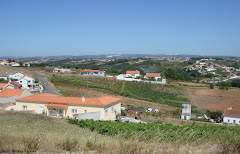 By:
Michael Batty
By:
Michael BattyOverview
In The New Science of Cities, Michael Batty suggests that to understand cities we must view them not simply as places in space but as systems of networks and flows. To understand space, he argues, we must understand flows, and to understand flows, we must understand networks—the relations between objects that comprise the system of the city. Drawing on the complexity sciences, social physics, urban economics, transportation theory, regional science, and urban geography, and building on his own previous work, Batty introduces theories and methods that reveal the deep structure of how cities function.
Batty presents the foundations of a new science of cities, defining flows and their networks and introducing tools that can be applied to understanding different aspects of city structure. He examines the size of cities, their internal order, the transport routes that define them, and the locations that fix these networks. He introduces methods of simulation that range from simple stochastic models to bottom-up evolutionary models to aggregate land-use transportation models. Then, using largely the same tools, he presents design and decision-making models that predict interactions and flows in future cities. These networks emphasize a notion with relevance for future research and planning: that design of cities is collective action.
Contents
List of Figures
List of Tables
Preface
Acknowledgments
Preamble
I Foundations and Prerequisites
1 Building a Science of Cities
2 Ebb and Flow: Interaction, Gravity, and Potential 47
3 Connections and Correlations: The Science of Networks
II The Science of Cities
4 The Growth of Cities: Rank, Size, and Clocks
5 Hierarchies and Networks
6 Urban Structure as Space Syntax
7 Distance in Complex Networks
8 Fractal Growth and Form
9 Urban Simulation
III The Science of Design
10 Hierarchical Design
11 Markovian Design Machines
12 A Theory for Collective Action
13 Urban Development as Exchange
14 Plan Design as Committee Decision Making
Conclusions: A Future Science
References
Author Index
Subject Index
Endorsements
“A brilliant synthesis of how concepts from complexity science change our understanding of cities. Scaling, fractals, and simulation models are clearly explained and used to demonstrate how flows and networks shape cities and how they can be better predicted and managed for improving urban planning and design. A great book for an emerging urban science.” —Denise Pumain, Université Panthéon-Sorbonne, Institut Universitaire de France
“As Michael Batty reminds us with fascinating historical excursus, the idea of developing a ‘science of cities’ is not new. However, today’s explosion of measurements in the urban field—the so-called big data phenomenon—is opening up possibilities that were unthinkable just a few years ago. New research territories are looming, to which this book is a compelling and perfectly timed guide.” —Carlo Ratti, Director, SENSEable City Lab, MIT
“Michael Batty has followed a career that has made him the prime interpreter of urban modeling in all its forms. Now his remarkable work has become the foundation of a new science of urban flows and networks that uses big data and sharp theory as tools to dig deep into how and what cities are, and how they can be designed in better ways. This is the book that sets the benchmark that all others will have to follow.” —Nigel Thrift, Vice-Chancellor, University of Warwick
Ver mais:
http://www.complexcity.info
http://www.amazon.com/The-Science-Cities-Michael-Batty/dp/0262019523
http://mitpress.mit.edu/books/new-science-cities
Enviado por:
Céline ROZENBLAT
Professor
Chair of the Urban Geography Commission
of the International Geographical Union













Sem comentários:
Enviar um comentário